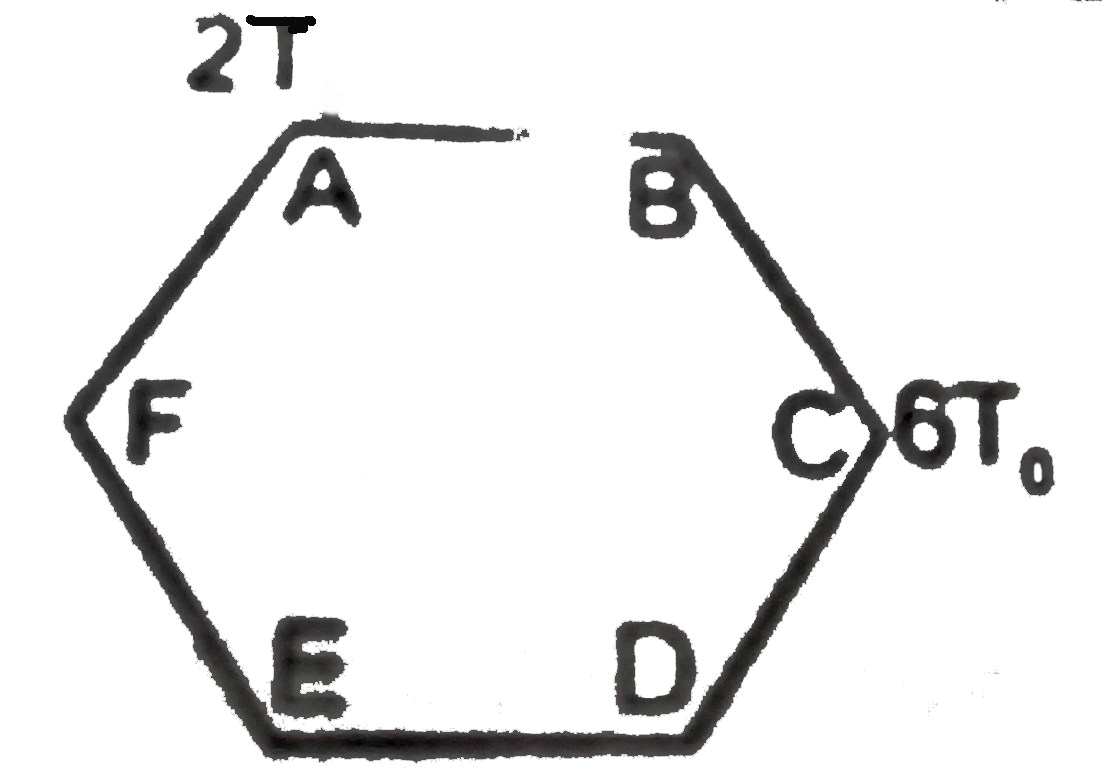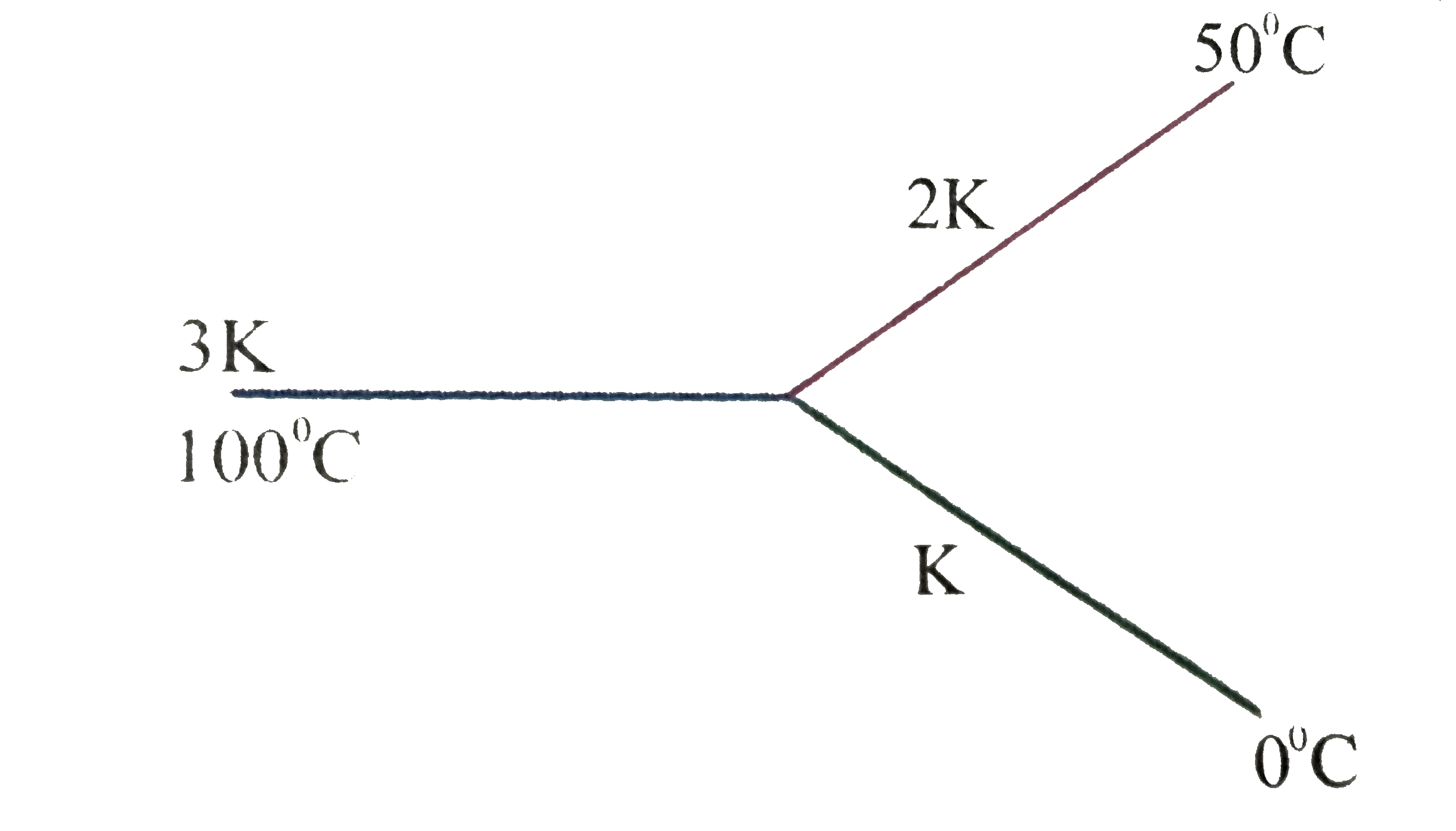The ends of a rod of uniform thermal conductivity are maintained at different (constant) temperatures. After the steady state is achieved :
heat flows in the rod from high temperature to low temperature even if the rod has nonuniform cross sectional area.
temperature gradient along length is same even if the rod has non uniform cross sectional area.
heat current is same even if the rod has nono-uniform cross sectional area
if the rod has uniform cross sectional area the temperature is same at all points of the rod.
Heat obviously flows from higher temperature in steady ⇒ A is true. Temperature gradient ∝1cross section area in steady state ⇒ B is false thermal current through each cross section area is same ⇒C is true Temperature decreases along the length of the rod from higher temperature end to lower temperature end ⇒D is false.
Topper's Solved these Questions
Similar Questions
The ends of a rod of uniform thermal conductivity are maintained at different (constant) temperatures. Afer the steady state is achieved:
View SolutionThe two ends of a uniform rod of thermal conductivity k are maintained at different but constant temperatures. The temperature gradientat any point on the rod is dθdl(equal to the difference in temperature per unit length). The heat flow per unit time per unit cross-section of the rod is l then which of the following statements is/are correct:
View SolutionThe thermal conductivity of a rod depends on
View SolutionThe thermal conductivity of a rod depends on
View SolutionThe thermal conductivity of a rod depends on
View SolutionSix identical uniform conducting rods are fixed to make a regular hexagon as shown. The ends A and C are maintained at constant temperature 2T0 and 6T0. After the steady state is reached. Pick up the correct relation between temperatures TB,TB,TE and TF of ends B,D,E and F respectively.
 View Solution
View SolutionOne end of the rod of length l, thermal conductivity K and area of cross-section A is maintained at a constant temperature of 100∘C. At the other end large quantity of ice is kept at 0∘C . Due to temperature difference, heat flows from left end to right end of the rod. Due to this heat ice will start melting. Neglecting the radiation losses find the expression of rate of melting of ice.
 . View Solution
. View SolutionThree rods of same dimensions have thermal conductivity 3K,2K and K They are arranged as shown in Then the temperature of the junction in steady state is
 .View Solution
.View SolutionA cylinder of radius r made of a material of thermal conductivity K1 is surrounded by a cylindrical shell of inner radius r and outer radius 2r made of a material of thermal conductivity K2. The two ends of the combined system are maintained at two different temperatures. There is no loss of heat across the cylindrical surface and the system is in steady state. Show that the effective thermal conductivity of the system is (K1+3K2)/4.
View SolutionA cylinder of radius R made of a material of thermal conductivity K1 is surrounded by a cylindrical shell of inner radius R and outer radius 2R made of a material of thermal conductivity K2. The two ends of the combined system are maintained at two different temperatures. There is no loss of heat across the cylindrical surface and the system is in steady state. The effective thermal conductivity of the system is
View Solution

